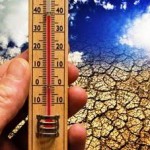“The Harappans were an enterprising people taking advantage of a window of opportunity – a kind of “Goldilocks civilization”, said Giosan. “As monsoon drying subdued devastating floods, the land nearby the rivers – still fed with water and rich silt – was just right for agriculture. This lasted for almost 2,000 years, but continued aridification closed this favorable window in the end.”
In another major finding, the researchers believe they have settled a long controversy about the fate of a mythical river, the Sarasvati. The Vedas – ancient Indian scriptures composed in Sanskrit over 3000 years ago – describe the region west of the Ganges as “the land of seven rivers”. Easily recognizable are the Indus and its current tributaries, but the Sarasvati, portrayed as “surpassing in majesty and might all other waters” and “pure in her course from mountains to the ocean”, was lost. Based on scriptural descriptions, it was believed that the Sarasvati was fed by perennial glaciers in the Himalayas. Today, the Ghaggar, an intermittent river that flows only during strong monsoons and dissipates into the desert along the dried course of Hakra valley, is thought to best approximate the location of the mythic Sarasvati, but its Himalayan origin and whether it was active during Vedic times remain controversial.
Archaeological evidence supports the Ghaggar-Hakra as the location of intensive settlement during Harappan times. The new geological evidence – sediments, topography – shows that rivers were indeed sizable and highly active in this region, but most likely due to strong monsoons. However, there is no evidence of wide incised valleys like along the Indus and its tributaries, and researchers did not find any cut-through, incised connections to either of the two nearby Himalayan-fed rivers of Sutlej and Yamuna. The new study argues that these crucial differences prove that the Sarasvati (Ghaggar-Hakra) was not Himalayan-fed, but a perennial monsoon-supported watercourse, and that aridification reduced it to short seasonal flows.
By 3900 years ago, their rivers drying, the Harappans had an escape route to the east toward the Ganges basin, where monsoon rains remained reliable.
“We can envision that this eastern shift involved a change to more localized forms of economy: smaller communities supported by local rain-fed farming and dwindling streams,” said Fuller. “This may have produced smaller surpluses, and would not have supported large cities, but would have been reliable.”
Such a system was not favorable for the Indus civilization, which had been built on bumper crop surpluses along the Indus and the Ghaggar-Hakra rivers in the earlier wetter era. This dispersal of population meant that there was no longer a concentration of workforce to support urbanism. “Thus, cities collapsed, but smaller agricultural communities were sustainable and flourished. Many of the urban arts, such as writing, faded away, but agriculture continued and actually diversified,” said Fuller.
“An amazing amount of archaeological work has been accumulating over the last decades, but it’s never been linked properly to the evolution of the fluvial landscape. We now see landscape dynamics as the crucial link between climate change and people,” said Giosan. “Today, the Indus system feeds the largest irrigation scheme in the world, immobilizing the river in channels and behind dams. If the monsoon were to increase in a warming world, as some predict, catastrophic floods such as the humanitarian disaster of 2010, would turn the current irrigation system – designed for a tamer river – obsolete.”
This work was funded by the National Science Foundation (NSF), the Leverhulme Trust, Woods Hole Oceanographic Institution, the University of Aberdeen, and Louisiana State University.
Details of the Study:
About WHOI
The Woods Hole Oceanographic Institution (WHOI) is a private, non-profit organization on Cape Cod, Massachusetts, dedicated to marine research, engineering and higher education. Established in 1930 on a recommendation from the National Academy of Sciences, its primary mission is to understand the oceans and their interaction with the Earth as a whole, and to communicate a basic understanding of the oceans’ role in the changing global environment. For more information, visit www.whoi.edu.
Source: WHOI.












